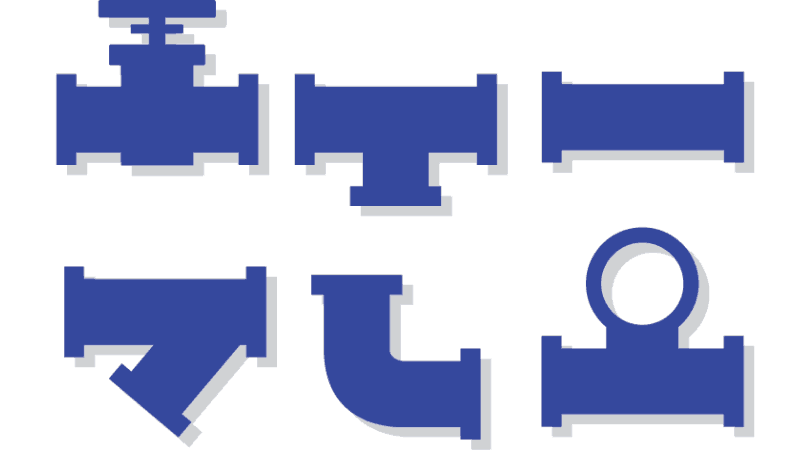In this article, you will learn about the difference between Piping and Pipeline.
When it comes to transporting the fluid, Piping and Pipeline are the most frequent words used in Oil & Gas industries. Let us explore the similarity and differences between Piping and Pipeline. Piping and Pipeline are both used to transport various liquids, gases, and sometimes slurry and powder material.
Straight Vs. Complex
The pipeline is a series of straight pipes welded together over a long distance. For example, the West-East Pipeline in China is 8,200 KMs long.
Piping is a complex network of pipes & fittings within the defined boundaries of the plant.
Above Ground / Under Ground / Sub-sea
The pipeline can run underground, aboveground, and underwater, such as a subsea pipeline. Whereas Piping is mostly above ground with very few underground services.
Large Dia Vs. Small Dia
Another difference between Piping and Pipeline is that Pipelines are mostly large diameters that transport bulk liquid or gas from one place to another, sometimes 1000s of miles in the distance. Whereas Piping can be from ½” to 80” as per the plant design requirements that transfer fluid from one piece of equipment to another within the plant boundary.
Use of Equipment
In the pipeline, the use of pipe fittings is limited. Mostly long radius bends with very few other fittings used at a pumping station and valve station.
Whereas in the case of piping very wide range of pipe fittings are used that serve different purposes within the piping system, such as changing the direction, size, branching, blinding, etc.
Similarly, in the pipeline, a few pieces of equipment are used within the pipeline system, such as pumps, valves & instruments that support the system’s function to transport fluid safely over a long distance.
Whereas a variety of equipment such as a pump, valves, filter vessel, column, heat exchanger, and instruments are used within the piping system that supports the function of the plant to produce a finished product.
Piping Component Quiz – Test yourself, Take This Quiz
Unlock New Skills with Our Best Selling Online Courses
Design Codes & Standard
The last difference between Piping and Pipeline, In Oil & Gas Industries, a pipeline is designed in accordance with ASME B31.4 is code for Liquid Transportation Systems for Hydrocarbons, Liquid Petroleum Gas, Anhydrous Ammonia, and Alcohol, and ASME B31.8, that is code for Gas Transmission and Distribution Piping Systems.
Whereas Piping is designed in accordance with ASME B31.3, which is the Process Piping code, and for power plant piping ASME B31.1 is the code for Power Piping.
| PIPELINE | PIPING |
|---|---|
| Series of straight pipe welded together for a long distance | Complex network of pipe & fittings within the defined boundaries of the plant |
| underground, aboveground and underwater such as subsea pipeline | Mostly above ground with very few underground services. |
| Mostly large diameter | Can be from ½” to 80” in diameter |
| Use of pipefittings are limited. | Very wide range of pipefittings are used. |
| Few equipment are used within the Pipeline system | Verity of equipment used within the piping system |
| Design in accordance with ASME B31.4, ASME B31.8 | ASME B31.3 , ASME B31.1 |
Are You Piping Components Master?



